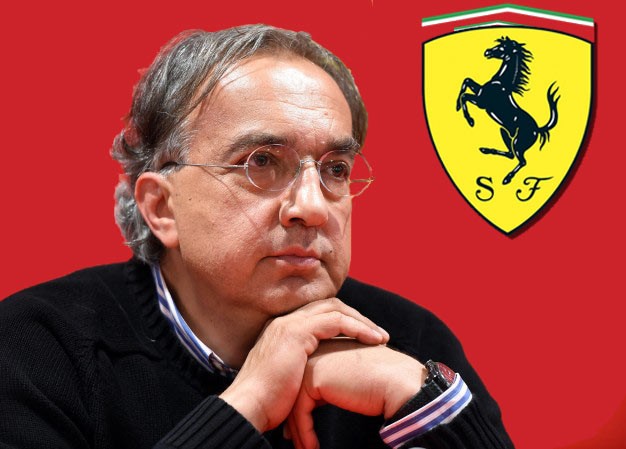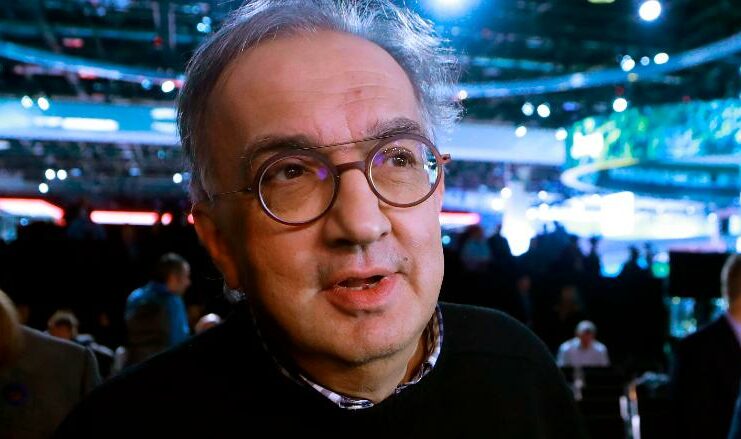Imagine the Formula 1 world championship is hanging on a knife’s edge. There are only 5 Grands Prix to go. Of these, the title holder, the one holding a slight edge over the one in pursuit loses two back-to-back races. There is pressure. Intense pressure. This leads to a change in the leadership guard.
There are only 3 races left. And then suddenly, somehow, out of nowhere, the trailing driver completes a hat-trick of wins. In producing consecutive stunners, he takes home the World Championship.
Wouldn’t that be a massive turnaround?
This avidly sums up the life of Sergio Marchionne, the former boss of Fiat who passed away aged 66. The word turnaround was so implicit in the life of Sergio Marchionne that it described not only the various intersections of his corporate life but the successes it afforded him.
For someone who began his career with revered consultancy group Deloitte & Touche, then moved to a packaging producer only to further move to a pharma and drug major in Switzerland- transition and business revival came as uninvited challenges but ones he mastered amicably using sharp acumen and guile.
He may have operated finally for a substantive period in Fiat’s Turin-based posh headquarters in a brand synonymous with performance and durability. But the automotive industry and its paraphernalia would always remember Sergio Marchionne as the man who turned around a waning brand and brought about caustic changes that were relentless in their pursuit of success and financial stability.
Had that not transpired, one would’ve merely resorted to the cursory headline one’s accustomed to hearing when a giant falls: another one bites the dust.
While in the present moment and in the decades hence, Sergio Marchionne would be remembered as the antithesis of beholding a massive corporate’s working culture, firing hundreds together and incorporating sudden replacements, it was his ostentatious policies and realignment strategies that breathed life in the collapsing Fiat brand.
Arriving at Fiat in 2003 and handed over a brand that whose fortunes were collapsing akin to the internal organs of the human body, on Sergio Marchionne’s cabin table- there were more sheets staring at losses than profits. You know deep down within that your very first year at a new job can also be your last when you’re tasked with reviving an automotive major that’s just evidenced a loss of over $6 billion.
That was 2003. But in 2005 Sergio Marchionne did to Fiat what Vettel and Raikkonen have done to Ferrari ever since 2014 season.
He’d give the brand a profit of $2 billion by forming a pivotal alliance with the revered General Motors Co.
When an American mega-corporate shakes hands with an Automotive stallion, fireworks can happen.
This is exactly what was expected.
Marchionne: A harbinger of change.
Then, in 2009, none other than Obama’s direct administration announced that Fiat, the hitherto loss-making firm would take control of Chrysler LLC.
One man would oversee the prevention of bankruptcy for the American major.
That was none other than Sergio Marchionne, a man renowned for being a fearlessly independent mind, someone who would paint masterstrokes with graffiti paint spray instead of a classic paint-brush.
His creations were modern classics confined to a revival of businesses akin to the guy who begins as a backmarker but finishes on top of the podium to save his Grand Prix.
Sergio Marchionne was reviled for bringing about massive structural and hierarchical changes in a brand Italy produced, nearly everyone in the world revers and few come to critique. Nothing would pay a better homage to this mindset, seemingly hard-wired in Marchionne’s intellect other than the poster carved on his cabin. It was a saying carved in a Picasso classic that said, “Every piece of creation is, first of all, an act of destruction.”
Most feel he got Italy closer to the United States than former Italian executives ever managed.
He’d continue to be hated by the government and the corporate cohorts but would be stunned by his great work ethics and a supreme sense of confidence.
In 2013, Fiat and Chrysler rolled out more successful vehicle models than in the half-decade earlier.
Sergio Marchionne was the top cat of Fiat

When anyone hears about the brand Ferrari, there’s but one word that tops the mind. Speed, isn’t it? Ferrari is a dream for the most part of the world that only a few get to realise or live. Owning nearly half a dozen of the revered luxury sportscar brand, Sergio Marchionne would often take to the firm’s home track at Fiorano on an off-day at the office.
He’d even crash an Enzo model stating no remorse about the incidence. Legend has it that going at over 200 k/hr was normal in his course of life.
A family man but who seemed a loner, a mentally tough top-level executive who lived life on his own terms, complicated that they may have seemed, where most in the bustle of Rome wore neckties and embraced suits with tactical lining, the bespectacled Central Italy-born corporate doyen would don a Black Ferrari sweater, and often made news for his fetish for denim.
In the last decade, Marchionne was to the Fiat group (that owns Formula 1’s oldest and most successful racing marquee) what Michael Schumacher was to Grand Prix racing.
A busy, hectic life
No other praise can suffice the lavishness of respect this man commanded and shall, for decades to come.
While a pack of Muratti cigarettes pumped him at work, he’d live on a constant caffeine-fed diet of expressos. Straddling between different 4-5 cellphones, he often lived on planes, globe-trotting, the passion for Formula 1, the resurrection of the Ferrari brand and, a penchant for speed being his poisons of choice. These weren’t fatal, rather fuelled life in this astute thinker.
Revered business publication Bloomberg hit it spot on when it stated, “he publicly campaigned for a merger with General Motors Co. in 2015 but was rebuffed by the U.S. carmaker.”
What took Sergio Marchionne away is perhaps as complex as the life he lived, his head buried in astounding corporate challenges, the ones he fashionably overcame as shared.
How on earth could someone pass away from a stroke that emanated from complications of a shoulder surgery? Where French philosopher Albert Camus stands, then perhaps the theory of the ‘absurd’ applies to certain shenanigans life indulges in.
Maybe there’s a sense to attribute Sergio Marchionne’s passing in that regard. It suffices to say, what’s claimed the life of the successful man was absurdly sudden and strange.
What is Marchionne’s legacy?
The Fiat brand owes about as much to Marchionne as does Ferrari to the legacy of Michael Schumacher, both showmen of a different style and grandeur. He was derided by trade unions for slashing jobs.
Yet, he was respected by most Jeep dealers in Georgia as in much of America, that suggest a ‘Bronze statue’ in his honour would pay him true regard.
Few men in the annals of the automotive industry are as respected as they are polarised. And that’s what Sergio Marchionne was, complicated as the fast-paced corners of a Nurburgring but equally legendary like this one of a kind track.

